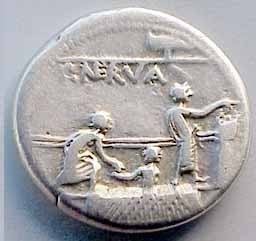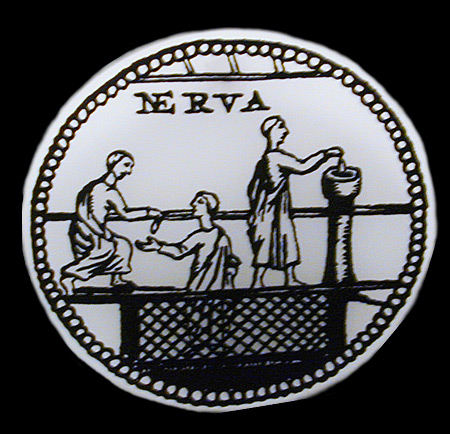|
Coin |
Coin Sketch...
|

|
 |
Publius Licinius Nerva silver denarius (dinar), 113/2 B.C. (M.
Crawford, Roman Republican Coinage, No. 292)
Scene depicts Roman citizens voting at the Regio VIII facing the
Senate. Each elector must stand in the column corresponding to his tribe.
Two voters are casting their votes in the Comitium. The voter on
the left mounts a small platform then receives a tabella (ballot)
from the attendant in the middle, while the voter on the right places his
tabella in a cista (urn). Te ballot was introduced to the Roman
comitia by the Leges Tabellaria of which the Lex
Gabiana (139 BC) related to the election of magistrates, the Lex
Cassia (137 BC) related to judicia populi and the Lex
Papiria (131 BC) related to the enactment and repeal of laws. It was
Caius Licinius Crassus, a plebeian tribune who first introduced separate votes at the comitia in 145 BC. In 139 BC, the use of the cista
to collect the wooden tabellas came into effect.
The two horizontal lines in the background are the barriers of the
saepta, separating the 35 Roman tribes.
The political life of Rome was dominated by its senatorial
class which was composed of two classes:
- The Populares -- whose power base was the Assembly of Tribes
and the tribunes -- representing the commons;
- The Optimates -- whose power base was nobility and wealthy
families -- representing the aristocrats -- or party of best
men.



